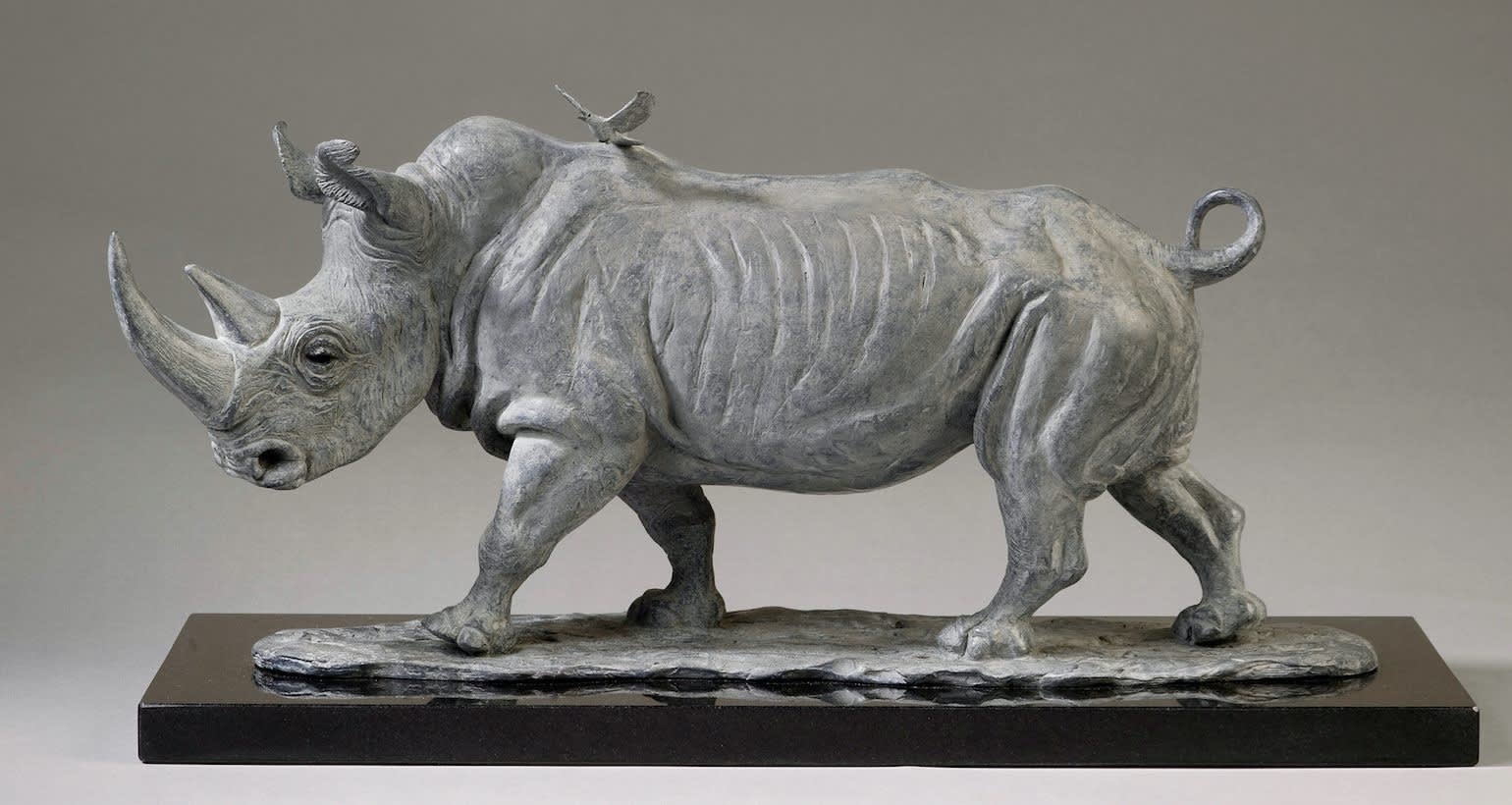Camilla Le May British, b. 1973
Camilla took on the job of sculpting Sudan, who died in March 2018, specifically to remember and commemorate him (as the last known male Northern White Rhino) and his species which are now functionally extinct and to raise awareness of the extinction crisis.
In 2016 Camilla sculpted Sudan from life on The Ol Pejeta Conservancy, Kenya in order to accurately capture the unique features of the species for posterity, given future generations will never see them in life unless IVF efforts succeed. She chose to sculpt him with a full horn, before it was trimmed, to show him as the magnificent animal he really was. Both the maquette and one-third life size were finalists for the David Shepherd Wildlife Artist of the Year in 2016 and 2017 with the enlargement being her interim step to a life size.
The Northern White Rhino was poached to extinction in the wild on their war torn home ranges of Central Africa. Sudan was captured aged two from the wild in Sudan, going on to live safely in captivity for his remaining 34 years and today only two females survive him. The oxpecker, who Camilla often saw with Sudan, and the dung beetles featured on the one-third life size sculpture were included to symbolise the critical impact of the loss of large herbivores on whole ecosystems. The flying bird is also a commonly used symbol in art historically to represent the winged soul leaving in death, in this case for Sudan and his species.
Despite the trade in Rhino horn being banned since 1977, all five Rhino species are severely threatened by poaching with over 1,000 killed annually. Camilla has used this work to raise funds for Rhino conservation efforts by gifting it to conservation NGO auctions and donating back a percentage of her sales.
